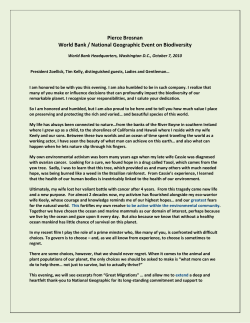
DISCOVER THE WONDERS OF THE UNIVERSE!
DISCOVER THE WONDERS OF THE UNIVERSE! KEY NAME: TEACHER: SCORE: DATE: Welcome to the Clark Planetarium! As you journey through the cosmos, see if you can find the answers to the questions below. If you listen and read carefully, all of the answers can be found somewhere in the Clark Planetarium! Good Luck! URANUS 1. Which planet in our Solar System was discovered by William Herschel? 2. How many planets have rings? FOUR 3. If you wanted to stay awake for an entire day on Mercury, how many Earth days would 176 you have to stay up? SATURN 4. Which is the most distant planet we can easily see without a telescope? SULFURIC ACID 5. What are the clouds covering Venus' surface made of? AUGUST 24, 2006 6. When was Pluto reclassified as a dwarf planet? INTERNATIONAL ASTRONOMICAL UNION (IAU) Who reclassified it? A HURRICANE LIKE STORM 7. What is Jupiter's 'Great Red Spot'? VENUS 8. Which planet was called the 'Star of Aphrodite'? ELEVEN 9. How many moons in our Solar System are larger than the dwarf planet Pluto? 10. Which planet was explored by the robotic craft 'Mariner 10'? MERCURY 11. How many planets in our Solar System do not have any moons? TWO RUSTED IRON IN THE SOIL 12. Why does the surface of Mars appear red? 15 13. During which Apollo mission was the Clark Planetarium's Moon rock collected? 14. What type of object is our Sun? A STAR 15. What is the name of the largest moon in our Solar System? 16. What gas in Neptune's atmosphere makes it appear blue? GANYMEDE METHANE 248 YEARS 17. How many years does it take for Pluto to travel once around the Sun? 18. The Foucault Pendulum is used to show that the Earth is..... 19. What do we call the four inner planets in our Solar System? 20. What do we call the four large outer planets in our Solar System? 21. Which planet has the shortest year? MERCURY Please turn this paper over to continue answering all of the questions! Funding for outreach programs provided by the Utah State Legislature and the Utah State Board of Education ROTATING ROCKY MIDGETS GAS GIANTS 22. There are two planets in our solar system that rotate retrograde (backwards). Can VENUS AND URANUS you name both? CHUNKS OF ICE AND ROCK 23. What are the rings of Saturn made of? 24. How much of the Earth's surface is covered by water? ABOUT 3/4 25. Mars has two tiny moons. What are their names? PHOBOS AND DEIMOS JUPITER 26. Which planet in our Solar System has the shortest day? SATURN 27. Which planet is our Solar System would float if you put it in water? ONE 28. How many natural satellites does Earth have? EARTH AND MARS 29. Which two planets in our Solar System have polar ice caps? 30. Which planet is tipped on its side? URANUS NEPTUNE 31. Which planet is named after the Roman god of the sea? 32. Which planet has the hottest temperature? VENUS MERCURY 33. Which planet looks very similar to Earth's moon? 34. Which planet is closest in size to the Earth? VENUS THE SUN 35. What is the largest object in our Solar System? 30 TIMES 36. How many times farther than Earth is Neptune from the Sun? EARTH 37. Which planet orbits the Sun at an average of 93 million miles away? 38. Which direction does the Sun rise on Venus? WEST URANUS 39. Which planet's moons are not named from Roman or Grecian mythology? 40. A day on Mercury is how many Mercury years long? TWO BONUS: List the eight planets in our Solar System in order from the largest to the smallest. 1. JUPITER 2. SATURN 3. URANUS 4. NEPTUNE 5. EARTH 6. VENUS 7. MARS 8. MERCURY Funding for outreach programs provided by the Utah State Legislature and the Utah State Board of Education
© Copyright 2025





















